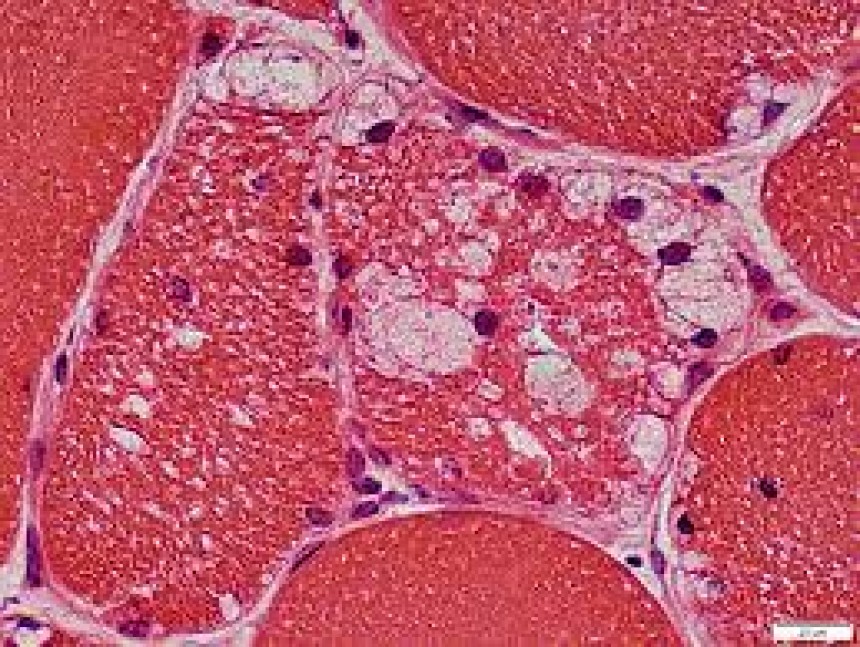
Acid Maltase Deficiency
Acid Maltase Deficiency (Pompe disease) is a glycogen storage disease. It has infantile and late-onset forms. Infantile form presents with heart issues and can be fatal in early childhood. Late-onset form causes skeletal myopathy and respiratory problems. Newborn screening helps with early diagnosis. Treatment involves enzyme replacement therapy and multidisciplinary care.
Acid Maltase Deficiency (Pompe Disease): Introduction and Types
Acid Maltase Deficiency (Pompe disease); an autosomal recessive disorder, is part of glycogen storage disease type-II (GSD-II). It is due to deficiency in acid alpha glucosidase with an accumulation of glycogen within the lysosome in tissues. It has an infantile form presenting with hypertrophic cardiomyopathy, as well as a late- onset juvenile and adult form which presents without cardiac manifestations. Late onset form is characterised by skeletal myopathy (usually limb-girdle) and a protracted course leading to respiratory failure. Serum creatine kinase is usually elevated. Without treatment, most patients with the infantile form have unremitting deterioration, with death during the first one to two years of age from cardiac insufficiency. (1, 2)
Newborn Screening for Pompe Disease
Newborn screening for Pompe disease is available in many countries. It allows earlier diagnosis and treatment which could improve morbidity and mortality. (3)
Multidisciplinary Approach in Pompe Disease Management
A multidisciplinary team is often required with clinical geneticist, physical therapist, cardiology specialist, orthopaedic specialist, dietarian and occupational therapist. (4)
Respiratory Support and Ventilation
Many patients require some level of respiratory support. Noninvasive ventilation during sleep may improve night-time hypoxemia and daytime hypercapnia in some patients with late- onset disease. Some patients may require increased levels of noninvasive respiratory support and may progress to require mechanical ventilation. (5)
Enzyme Replacement Therapy (ERT)
The primary treatment is enzyme replacement therapy (ERT) with aglucosidase alfa (Standard dosing 20 mg/kg given intravenously every two weeks, increasing to 20 mg/kg once a week in those with a poor response to initial therapy). (6)
References
1- Hirschhorn R, Reuser A. Glycogen storage disease type II: Acid alpha-glucosidase (acid maltase) deficiency. In: The metabolic and molecular bases of inherited disease, Scriver C, Beaudet A, Sly W, Valle D (Eds), McGraw-Hill, New York 2001. p.3389.
2- DiMauro S, Tonin P, Servidei S. Metabolic myopathies. In: Handbook of clinical neurology, Rowland L, DiMauro S (Eds), Elsevier, Amsterdam, The Netherlands 1992. p.479.
3-Chien YH, Chiang SC, Zhang XK, et al. Early detection of Pompe disease by newborn screening is feasible: results from the Taiwan screening program. Pediatrics 2008; 122:e39.
4- Erasmus MC. Pompe Center. www.erasmusmc.nl/ klinische_genetica/research/lijnen/pompe_center/?lang=en
5-Johnson EM, Roberts M, Mozaffar T, et al. Pulmonary function tests (maximum inspiratory pressure, maximum expiratory pressure, vital capacity, forced vital capacity) predict ventilator use in late-onset Pompe disease. Neuromuscul Disord 2016; 26:136.
6- Myozyme (alglucosidase alfa) product label. Genzyme Corporation, Cambridge, MA, April 2006.





